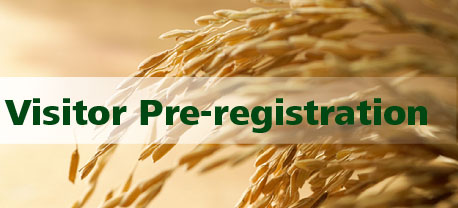News of Organic Industry
These figures on the structure of organic agriculture were ascertained by the company Agrarmarkt Informationsgesellschaft AMI in the context of its market study "Strukturdaten im ökologischen Landbau in Deutschland 2016". The study lists detailed data on land use, animal keeping and the sales revenue of organic producers. The data was compiled from information provided by ten organic control organisations that cover 90% of the land area and 89% of organic farms. From this information, data was extrapolated for the whole of Germany with total of 27,132 organic farms. The calculations also took into account data from surveys carried out by the Federal Statistical Office.

More pasture than arable land
It's noteworthy that fodder crops grow on roughly a third of the arable land. The biggest proportion is clover-grass, that plays an important part in organic farmers' crop rotations because clover binds nitrogen from the air in the soil. There has been an increase in growing pulses that are mainly used as fodder. In terms of area, the organic share is a fifth. Organic farmers also grew more oil seeds like rape and soya. In the case of soya the land area grew by 1,000 ha to 3,500 ha. In 2016, 8,600 ha were devoted to organic potatoes – 3.5% of the total potato-cropping land in Germany.
According to AMI, organic vegetables grown outdoors in Germany in 2016 occupied 11,000 hectares, which was a rise of 1,650 ha compared with 2015. The organic proportion of all outdoor vegetables was 8% on account of good yields, with the share of beetroot, carrots, bush beans and certain salad crops above average. North Rhine-Westphalia, Bavaria and Lower Saxony had the biggest proportion of land devoted to these organic vegetables.

Low productivity in organic greenhouses
In the case of organic cropping under glass, AMI noted a „much lower productivity compared with conventional cultivation“. Whereas the 238 ha of organic greenhouses constitute 23% of the total land cultivated under glass, they account for only 10% of the harvested products. Tomatoes and salads are the most important crops, followed by cucumbers and paprika.

Every sixth fruit tree is organic
“The area of permanent crops increased in 2016 by 1,000 ha,” states the AMI study. In the case of tree fruit, one sixth of the land area is now organic, and organic berry bushes already occupy over a quarter of the land. The most important fruits are chokeberry followed by elderberry and sea buckthorn. Farmers have expanded the land area for growing strawberries by a third. Since 2016 was a poor year for strawberry farmers, the growth in yield was far lower.

Animal keeping: more cattle and pigs
In 2016, 181,000 dairy cows produced 795 million litres of organic milk (4,400 litres per cow). This figure does not include the milk fed to calves and the milk that went via direct marketing to, for example, on-farm cheese making. Moreover, the number of cows includes animals on farms in the process of converting to organic that do not yet produce organic milk. So, the actual milk yield of the organic cows should in fact be quite a lot higher.
Beef production increased significantly and for the first time after two years of decline the number of pigs slaughtered rose once more. AMI estimated that the number of organic laying hens in Germany increased by 500,000 to 4.9 million. That would mean every ninth hen is organic. The AMI figure is considerably higher than the 4.2 million organic hens stated by the Federal Statistical Office. The reason is that the federal authority registered only flocks of more than 3,000 birds. However, in organic agriculture smaller-scale animal keepers, for example with mobile chicken houses for direct marketing, play an important role.

Nine percent more for farmers
For most organic farmers 2016 was a good year. The figure put on their revenue by AMI was 1.99 billion euros, which is a good 9% more than in 2015. “Different from last year, animal products accounted for the increase,” says the report. The biggest increases were in milk and eggs. But vegetables and fruit with their bigger harvests also made a significant contribution to higher revenues. In contrast, there was only a slight increase in revenue for cereals and arable crops. Overall, a good half of organic revenue was attributable to animal products.
Website resource: http://organic-market.info/news-in-brief-and-reports-article/germany-organically-managed-land-expanded-by-nearly-15-in-2016.html
Tags: organic , Germany









